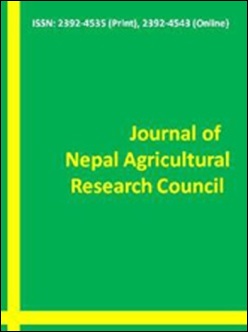Soil Physico-Bio-Chemical Properties under Poplar + Indian Mustard Inter Cropping System
DOI:
https://doi.org/10.3126/jnarc.v1i0.15719Keywords:
Fertility levels, pH, available N, P and K, DAAbstract
A field experiment was conducted during the winter seasons of 2008-10 at Agroforestry Research Centre, Pantnagar, India with aim to examine the effect of different levels of recommended Nitrogen (N): Phosphorus (P): Potassium (K) (NPK) on soil physico-bio-chemical properties under varying poplar tree densities with mustard introcropping. Lower soil bulk density was recorded under 1000 trees/ha density compared to sole crop in both the year. Soil bulk density (BD) decreased underneath trees. However, soil pH, available N and K were not influenced by tree density in both the years. Electrical conductivity (EC) and soil organic carbon (SOC) increased underneath trees of either tree density compared to sole crop in both the years. Significantly (P<0.05) higher available P was recorded under 1000 trees/ha density compared to 250 and 500 trees/ha densities including sole crop in 2008-09. Similarly, soil microbial biomass carbon (SMBC) increased with increasing the tree density and significantly (P<0.01) higher value was recorded under 1000 trees/ha density compared to sole crop and sparse density both the years except 2009-10, where 500 and 1000 trees/ha densities remain statistically at par. On the other hand, dehydrogenase activity (DA) was maximum under 500 trees/ha density compared to sole crop and 1000 trees/ha density in both the years. Among the fertility levels, the maximum SOC and available N were recorded with 75% compared to 50, 100 and 125% of recommended NPK in 2008-09, except available N with 100% of recommended NPK. But, available P was more with 100% of recommended NPK in 2008-09. Similarly, maximum SMBC were recorded with 75 % compared to higher doses of recommended NPK in both the years. Similarly, BD, EC, SOC, available N, P and K were recorded maximum and soil pH minimum in 0-15 cm soil layers compared deeper layers.
Journal of Nepal Agricultural Research Council Vol.1 2015 pp.14-20
Downloads
Downloads
Published
How to Cite
Issue
Section
License
This license enables reusers to distribute, remix, adapt, and build upon the material in any medium or format for noncommercial purposes only, and only so long as attribution is given to the creator.

